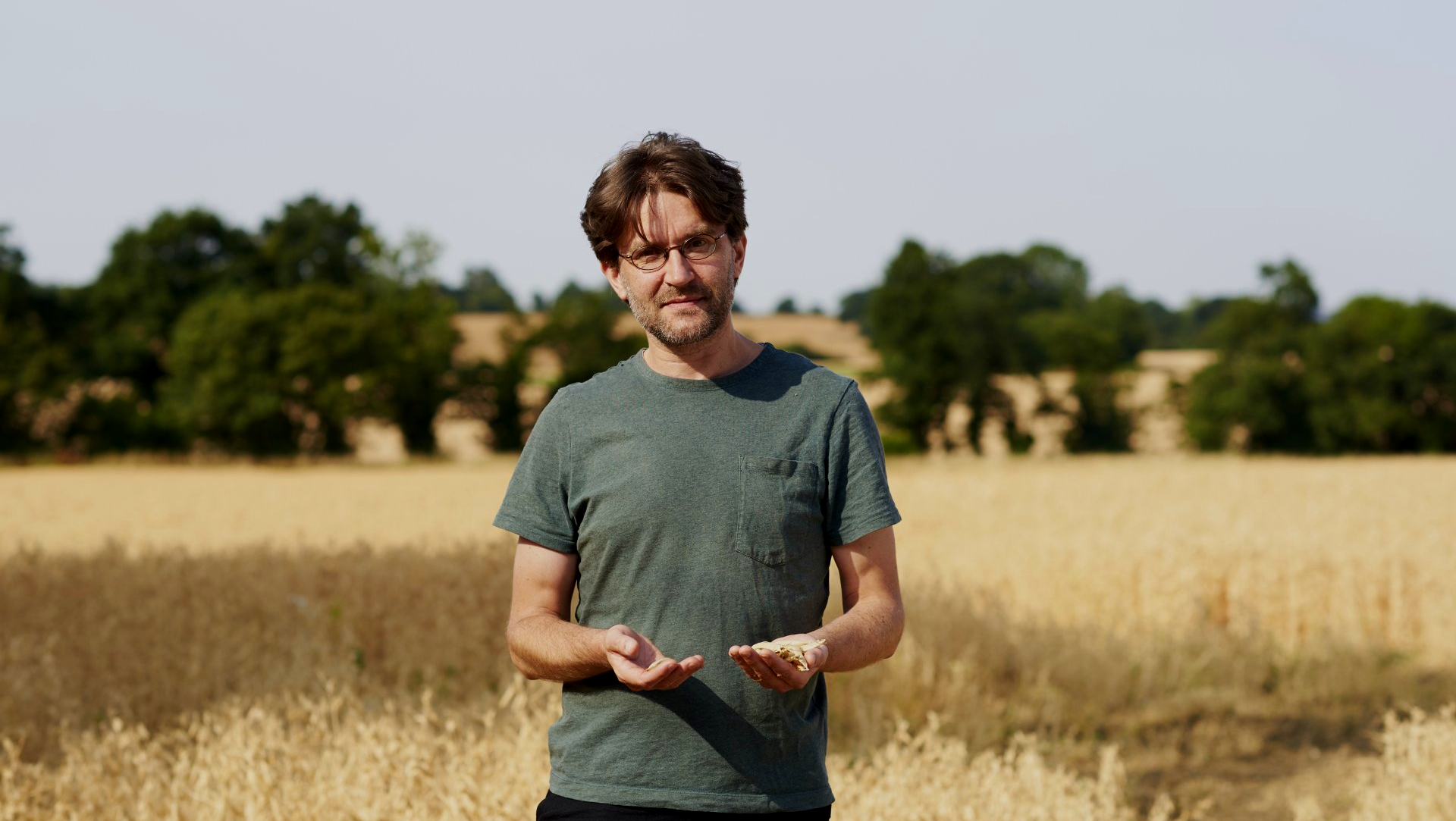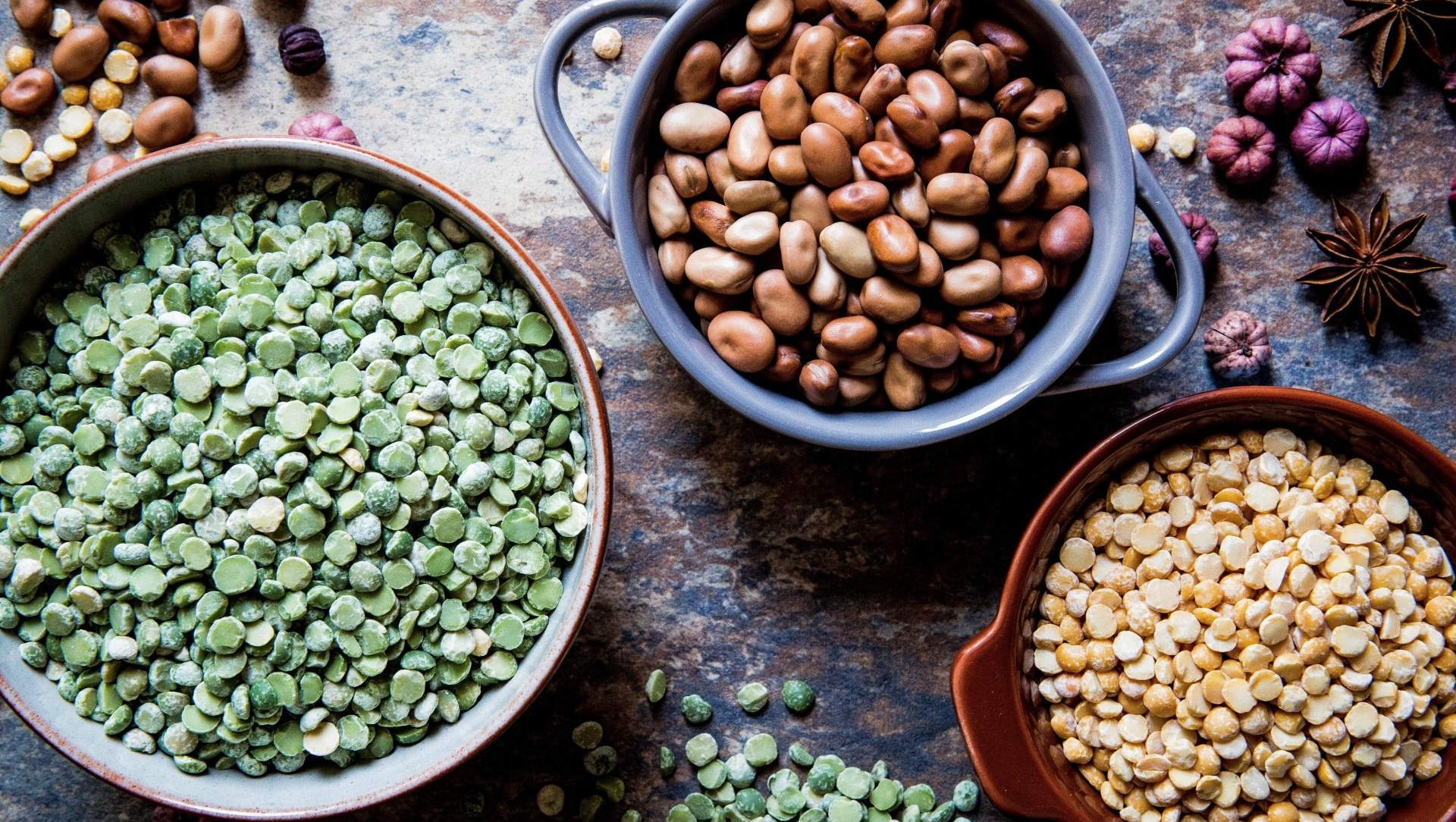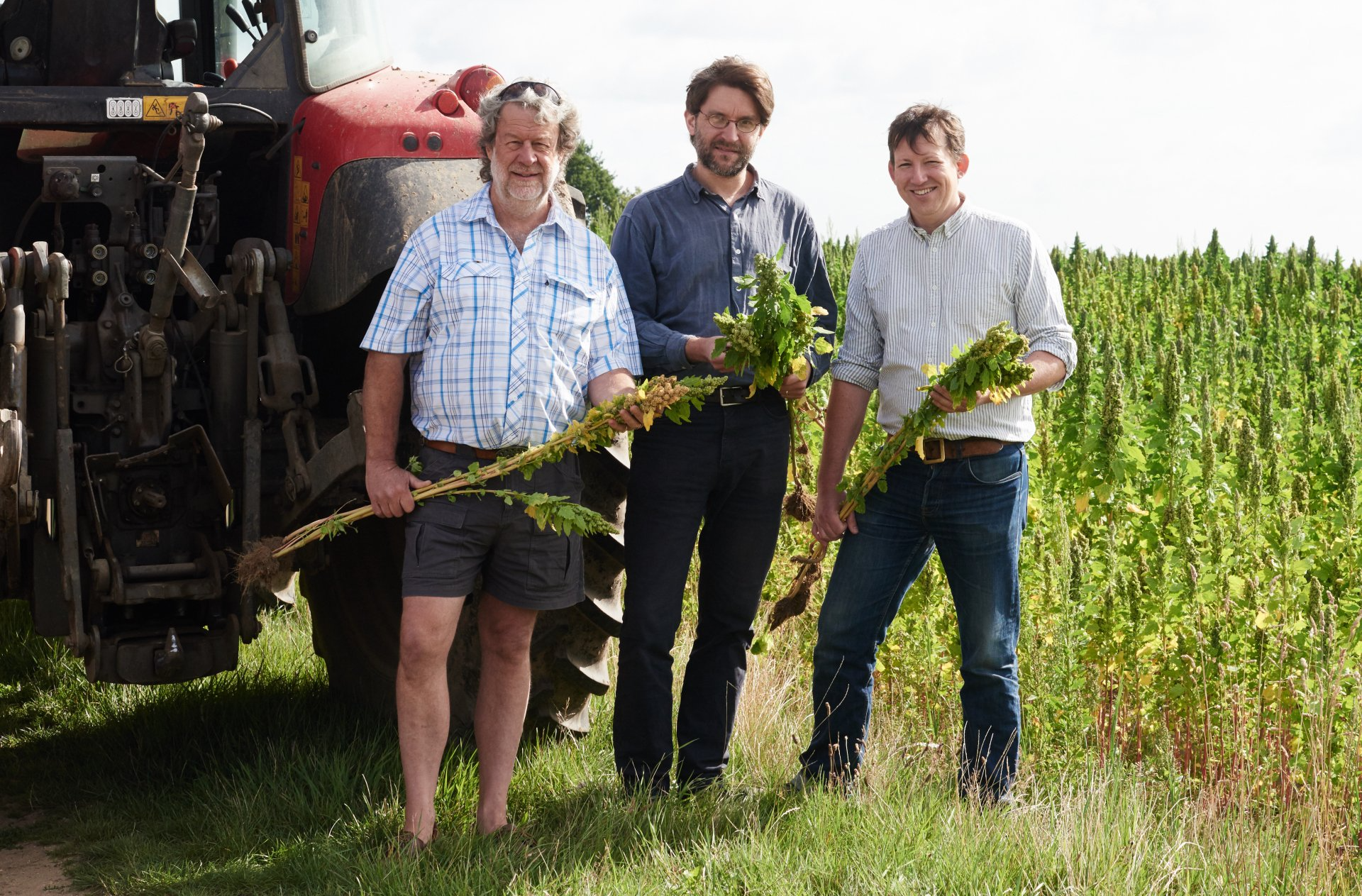Sustainable Farming - Hodmedods
The food we choose to eat, and the process in which it's farmed, can play a huge role in how the landscape is taken care of.
Changing the food system, adapting what we eat to rely more on sustainably grown food, can make a significant difference.
One way such way is to incorporate more locally grown beans, peas and lentils say Josiah Meldrum and Nick Saltmash from Hodmedods near Beccles.
Josiah Meldrum - Hodmedod Founder
There are all sorts of things that we need to deal with in the world at the moment. One of those is biodiversity loss, there’s climate change and chronic ill health. Changing farming rotations, the food system, changing what we eat and how we come by that food can make a really significant difference. One of the things farmers can do, and we can support them in doing (to make their farms more resilient and sustainable), is to grow a greater diversity of crops. So that’s pulse crops, and the beans and peas we began with. It’s also a whole range of seeds and a host of cereal crops, all of which form a whole that gives the farmer more security, and protects them against the vagaries of the weather. It also provides space for the wild creatures that we share the world with.
There’s little point having these wild edges around a field if the field itself is completely dead. We are seeing a huge increase in the cost of fertiliser. Using products like peas and beans as part of the farming rotation can really help alleviate that strain of moving towards a more regenerative system.
Synthetic nitrogen, nitrogen that’s made out of natural gas, through the
Haber-Bosch process that was invented during the First World War creates about 5% of global man-made carbon emissions. It’s extraordinary. That natural gas has got expensive and so the fertiliser has got expensive. There are loads of things that we can do to avoid its use through the use of more diverse rotational systems. One of them is by using pulse crops (that we eat), and which can fix nitrogen through their amazing relationship with soil bacteria. This process makes that nitrogen available to other plant species. Another way is to use leguminous lay crops, so that’s the same families of plants, which also put nitrogen in the soil for the following crop.

For those of us who don’t really know about these things called cover crops, or nitrogen fixing crops, describe what they do and how you farm using them.
There are all sorts of approaches. The most straightforward is to have a lay period, a rest period in your rotation. So this is a time when you wouldn’t be harvesting your arable crop, a wheat or another cereal or seed crop, and instead you are growing Lucerne or Alph-alpha which is bringing nitrogen out of the atmosphere and making it available to plants in the soil. Most plants can’t do that.
Within the copping system, within those things you are going to harvest, peas, beans, lentils, chickpeas, they all perform that role. You can either grow them on their own, so you might want to grow wheat and then beans, and then wheat again, or you could grow them together. You could be planting beans with your wheat for example. The advantage of that is you need less nitrogen for the wheat, and you will get a higher protein content in your cereal, which is then more likely to make a milling grade. You also get a bean harvest. All you need to do is separate them at the end.
Another approach that farmers sometimes use is a process called under sowing. Here they will drill their wheat in spring or in the winter, and they will sow clover at the same time. When they harvest the wheat in the autumn, the clover then comes into its own and is then an immediate cover preventing soil degradation it stops the loss of nitrates from the soil into the atmosphere, and makes it ready for the next crop that is set to be planted.

We have been through a very intensive process of farming over the last 80 years. We went from having food shortages post Second World War, and we started to realise the wonderful benefits of bigger fields, with fewer hedgerows, to make more space for growing food. We invested in fertiliser which has of course enabled us to produce a lot more food. The problem is that it's nowhere near as nutritious and the whole process has had a disastrous impact on the environment.
How would you like to see farming change?
We have quite a radical mission. When we began I think it seemed like a long way away, but it's increasingly being implemented by farmers. We need to move away from those monocultures, from the crops that were designed for large machines and industrial inputs, and we have to move towards farming systems that are more diverse and have a more diverse number of species within them. One of the things we would like to see is a lot more agro forestry. That's farming in thee dimensions because you are farming deeper into the soil, drawing up nutrients and water, that’s made available to the annual crops that are grown between the rows of trees. The trees themselves can be harvested, whilst also producing fruit, wood, timber, fuel, fibre. Anything can happen in that system and it’s great for nature.
In a year like this year for example, we have seen extreme heat, farmers that have that micro-climate that comes with agroforestry have done a lot better than those ones with large open fields. They have suffered less with the vagaries of the weather.
Is there a particular product that you love the most here?
I have three children so the recipe that I like has to be one that they like. I love our lentils because I have been working on them for seven years to get them into production in the UK. They are delicious and the recipe I love is making a really basic bolognese or ragu which you can then use to make a moussaka, spaghetti bolognese or lasagne. It’s really really simple, it’s really really delicious and the kids love it.
New Paragraph

Nick Saltmarsh - Hodmedod Founder
Peas and beans were what we started with and 10 years ago, with myself Josiah and William, (the three founders of Hodmedods). We were involved in a project to look at what would make the most local and sustainable diet possible, and we realised that vegetable protein is key top that. Reducing our dependance on animal for protein for meat and dairy brings huge benefits both for the sustainability of production but also in terms of our own health and nutrition. So if we can eat more vegetable protein, it’s good all round. The pulses, the vegetable proteins that grow the best in the UK are fava beans, also known as field beans, and different varieties of dried pea. That’s what we started with 10 years ago, as a simple step to get more of these British grown pulses, dried peas and beans into our kitchens and diets, and grown in arable rotations on farms around East Anglia.
It’s incredible to think that as you look around this huge great warehouse with stacks and stacks of different kinds of peas and beans that this enterprise started around a kitchen table just down the road. What makes you believe so strongly that we need to re-evaluate how we grow and eat food in this country.
The food we eat has a huge impact on the environment, both in terms of how its produced and in terms of what is produced. We’ve got to address that if we are to have a sustainable world and reduce carbon emissions and generally reduce the amount of demands that we are making on resources and also protect our soil so that I can continue to produce good food for us into the future.

So things need to change. It can be sometimes overwhelming to contemplate what that change will look like and what it needs to be, but we started Hodmedods with the simple premise that if we can get more British grown pulses, means and peasant our diets, and into our farming rotations, then that is a very positive step. What we then realised was that we can go further, quite easily, with the network of framers around us. We added to our range, growing a diverse selection of not just pulses, but also grains sand seeds including some lesser-known and older varieties that require lower inputs and are more resilient in the face of climate change Essentially what we are trying to do is increase the diversity of farming, which brings huge benefits, whilst also increasing the diversity of plant-based foods in our diet which has benefits to us individually as well.
It's really easy to get these products into your diet, but they are unfamiliar. We realised from the outset that trying to encourage people to eat more fava beans, a bean that was our very first product, a bean that most people were unfamiliar with though they used to be a big part of our diet in Britain, that we would have to work really hard to help people understand how to use them. We worked with chefs and cookery writers and worked ourselves to build an extensive selection of recipes and suggestions on how to cook and eat these kinds of products.
It’s really important that you try different things We’ve been taught by the supermarkets to look for food that’s as convenient as possible, and if you just step away from that and just look at whole food ingredients, there’s a whole load of foods that are available. It unlocks a whole world of potential, from the farms around us , and creates that connection between the farms, the gain they grow, and the food we eat. That connection to food can be really important just in terms of where our food comes from and the impacts it has.

WildEast Blog

Powered by LocaliQ
Follow Us
SIGN UP FOR NEWS & UPDATES
Newsletter Sign Up
Thank you for signing up to our newsletter.
Please try again later.
Privacy / Terms & Conditions / Sitemap
